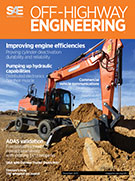Technical Paper
Safe and Secure Development: Challenges and Opportunities
2018-04-03
2018-01-0020
The ever-increasing complexity and connectivity of driver assist functions pose challenges for both Functional Safety and Cyber Security. Several of these challenges arise not only due to the new functionalities themselves but due to numerous interdependencies between safety and security. Safety and security goals can conflict, safety mechanisms might be intentionally triggered by attackers to impact functionality negatively, or mechanisms can compete for limited resources like processing power or memory to name just some conflict potentials. But there is also the potential for synergies, both in the implementation as well as during the development. For example, both disciplines require mechanisms to check data integrity, are concerned with freedom from interference and require architecture based analyses. So far there is no consensus in the industry on how to best deal with these interdependencies in automotive development projects.










